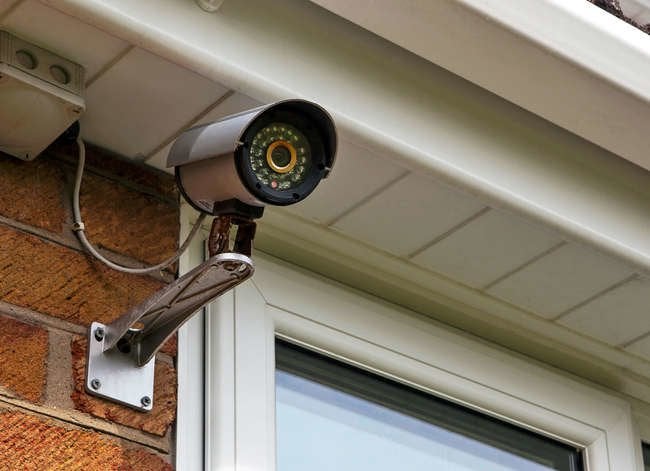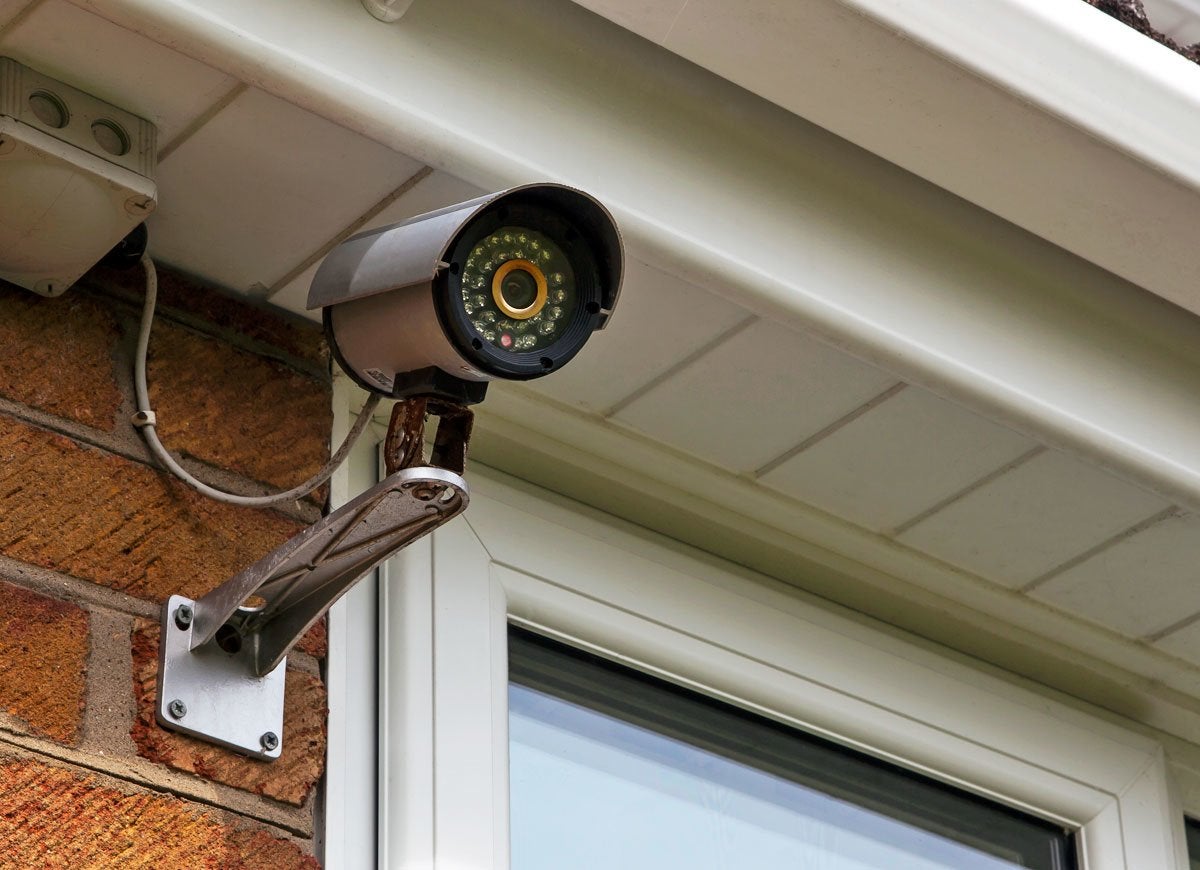

We may earn revenue from the products available on this page and participate in affiliate programs. Learn More ›
A Dark Home

Many burglars depend on darkness to hide their criminal acts, so they’ll steer clear of a well-illuminated house. Leave on porch lights to discourage burglars from approaching entry doors, and install bright motion-detector lights around your home’s perimeter to dissuade them from searching for an open window. For added protection, install timers on interior lamps to give the appearance that the house is occupied at all times.
An Empty Driveway

As burglars prefer breaking into vacant houses, empty driveways are an open invitation for a robbery. Ask a trusted neighbor, family member, or friend to park in your driveway when you go on vacation—especially if you’ll be gone for more than a few days.
Related: 13 Hacks Every Car Owner Should Know
Unlocked Windows and Open Drapes

After they’ve targeted a home, thieves often check for unlocked windows, which serve as an easy entry point. Before you leave the house and before you go to bed, close and lock all windows on the ground floor as well as second-floor windows that could be relatively easily accessed. Also, close the drapes so would-be intruders can’t scope out the contents of your interior, as any expensive object in plain sight may tempt them.
Related: 10 Free and Low-Cost Ways to Improve Your Home Security
Overgrown Lawn and Landscape

An overgrown lawn and poorly maintained landscaping indicate that residents may be away on an extended vacation. What’s more, unkempt bushes can offer protective cover for intruders as they break into your home. Keep your plants trimmed to a height that does not block the view of your windows, and mow your lawn regularly. If you’re planning to take a vacation, recruit someone in the neighborhood to keep your yard in shape.
Oversharing on Social Media

Most people love sharing vacation updates on social media, but posting your travel plans on Facebook or Instagram is akin to putting a big sign in your front yard announcing that you’ll be gone. Keep your property safe by telling only trusted friends about your vacation, and refrain from sharing photos until after you’ve returned home.
Related: 13 Mistakes You Make Every Time You Leave for Vacation
Making Clear You're on Vacation

If you’re planning a vacation, ask a trusted neighbor, friend, or family member to stop by your home daily to pick up newspapers and packages. This person should also double-check your locks to ensure that everything is secure. For added safety, have the post office hold your mail until you get back home.
Related: 8 Ways to Make It Look Like You’re Home When You’re Not
An Open or Unlocked Garage

After breaking into an attached garage, a burglar can easily find his way into your house. Make sure to close your garage door whenever you leave home. Also, disable automatic garage door openers if you’re going on vacation, because some openers can be activated with wire, a coat hanger, or intercepted radio signals.
Unlocked Storage Sheds and Outbuildings

What items are commonly found in storage sheds? Ladders, hammers, wire nippers, pry bars, and a host of other tools that make forced entry into your home a snap. Always secure your tools after using them, and lock your sheds and outbuildings.
Related: We’ve Rounded Up the Best Sheds to Increase Storage or Workshop Spaces
A “Hidden” Spare Key

Stashing a spare key inside a planter, under a porch rug, or behind a mailbox may seem clever, but seasoned thieves know the best hiding places. Instead, keep an extra key with a trusted neighbor, or install a keypad lock for your front door.
Related: The Most Cunning Secret Hiding Spots We’ve Ever Seen
Expensive Items on Display

Need to get rid of the box for your new 80-inch flat-screen television? Don’t put it on the curb, where it will attract the attention of potential burglars. Safely dispose of boxes for expensive products by cutting them up and tossing them in the trash can. Likewise, don’t leave pricey bicycles, grills, and other valuables in plain view.
Related: The Ultimate Bug-Out Bag List: 30 Emergency Essentials for When Disaster Strikes
Lack of Home Security

Not every homeowner can afford an expensive security system, but you can deter many burglars by making them think your property is protected. Placing small security signs in your yard or sticking a security decal on a window will discourage many intruders. Similarly, homeowners can install dummy security cameras, which closely resemble the real deal. Even a “beware of dog” sign will deter robbers from entering your home. However, it’s worth considering investing in one of the best home security systems (such as Vivint or ADT).

All You Need to Care for Your Lawn & Garden
Keeping your grass green and your plants thriving doesn’t just take a green thumb—it starts with the right tools and supplies.